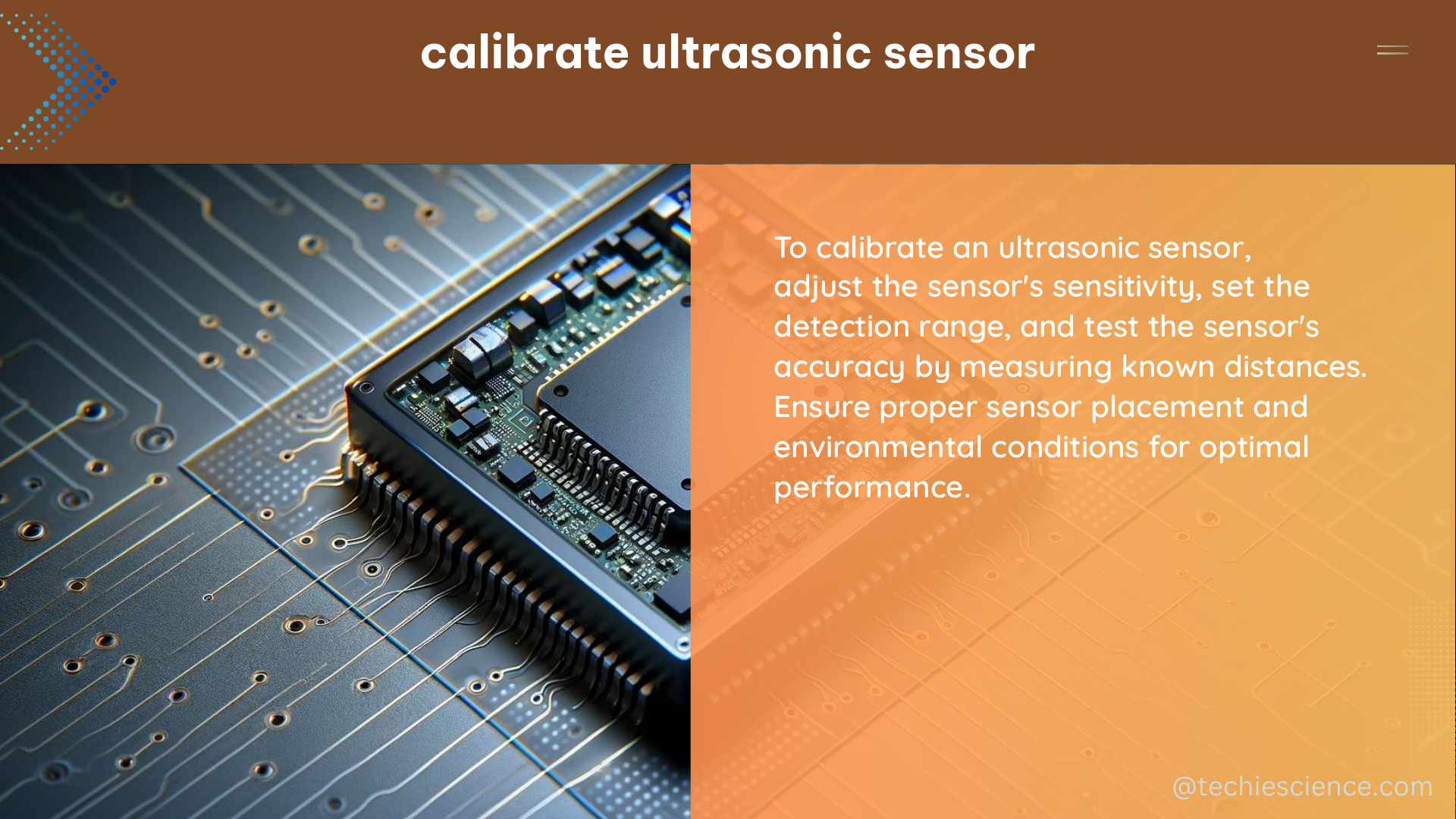Calibrating an ultrasonic sensor, such as the HC-SR04, is crucial for ensuring accurate distance measurements. This process involves understanding the various environmental factors that can affect the speed of sound, creating a correlation between the pulse duration and distance, and making necessary adjustments to improve the sensor’s accuracy.
Understanding the Factors Affecting Ultrasonic Sensor Calibration
The speed of sound in air is influenced by several environmental factors, including temperature and relative humidity. At 20°C and 50% relative humidity, the speed of sound is approximately 340 m/s. However, this value can vary depending on the specific conditions during the calibration process.
Temperature and Its Effect on the Speed of Sound
Temperature is a significant factor that affects the speed of sound. As the temperature increases, the speed of sound also increases. The relationship between temperature and the speed of sound can be expressed using the following formula:
Speed of sound (m/s) = 331.3 + 0.606 × Temperature (°C)
For example, at 10°C, the speed of sound is approximately 336 m/s, while at 30°C, it is around 344 m/s. Accounting for temperature changes during the calibration process is crucial for improving the accuracy of the ultrasonic sensor.
Relative Humidity and Its Effect on the Speed of Sound
Relative humidity also affects the speed of sound, although to a lesser extent than temperature. As the relative humidity increases, the speed of sound decreases slightly. The relationship between relative humidity and the speed of sound can be approximated using the following formula:
Speed of sound (m/s) = 331.3 + 0.606 × Temperature (°C) - 0.0124 × Relative Humidity (%)
For instance, at 20°C and 30% relative humidity, the speed of sound is around 343 m/s, while at 20°C and 70% relative humidity, it is approximately 341 m/s.
Calibrating the Ultrasonic Sensor

To calibrate an ultrasonic sensor, follow these steps:
-
Connect the Sensor to a Microcontroller: Connect the ultrasonic sensor, such as the HC-SR04, to an Arduino UNO or a similar microcontroller board.
-
Measure Pulse Duration and Distance: Place the sensor at specific intervals along a ruler or a known distance reference. For each position, record the pulse duration (the time between the sensor sending out and receiving a pulse) and the corresponding distance.
-
Create a Correlation Between Pulse Duration and Distance: Using the recorded data, create a correlation between the pulse duration and the distance. This can be done by plotting the data points and fitting a linear or polynomial regression line to the data.
-
Measure Temperature and Relative Humidity: During the calibration process, measure the temperature and relative humidity of the environment. These values will be used to account for their effects on the speed of sound.
-
Adjust for Temperature and Humidity Effects: Apply the temperature and humidity correction formulas to the speed of sound calculation. This will help improve the accuracy of the distance measurements.
-
Validate and Refine the Calibration: Test the calibrated sensor at various distances and environmental conditions. If necessary, repeat the calibration process and make any adjustments to improve the sensor’s accuracy.
Calibration Accuracy Considerations
When calibrating an ultrasonic sensor, it is important to consider the following factors to ensure the highest possible accuracy:
-
Sensor Placement: Ensure that the sensor is positioned perpendicular to the target surface and that there are no obstructions or reflective surfaces that could interfere with the ultrasonic signal.
-
Measurement Precision: Use a high-precision ruler or distance reference to accurately measure the distances during the calibration process. Minimize any parallax errors or measurement uncertainties.
-
Environmental Stability: Perform the calibration in a stable environment with minimal fluctuations in temperature and humidity. Sudden changes in these conditions can affect the speed of sound and introduce errors.
-
Sensor Repeatability: Test the sensor’s repeatability by taking multiple measurements at the same distance. Ensure that the sensor consistently provides accurate and reliable results.
-
Calibration Range: Calibrate the sensor over the full range of distances that you expect to measure. Extrapolating beyond the calibrated range may result in decreased accuracy.
-
Sensor Limitations: Understand the limitations of the ultrasonic sensor, such as its maximum and minimum detection ranges, beam width, and resolution. These factors can impact the overall calibration accuracy.
By following these guidelines and considering the technical specifications of the ultrasonic sensor, you can effectively calibrate the sensor and achieve accurate distance measurements in your applications.
References:
- HC-SR04 calibration conditions – Arduino Stack Exchange. https://arduino.stackexchange.com/questions/45166/hc-sr04-calibration-conditions
- Arduino UNO: Complete Ultrasonic Sensor Guide (HC-SR04) – Instructables. https://www.instructables.com/Arduino-UNO-Complete-Ultrasonic-Sensor-Guide-HC-SR/
- Ultrasonic sensor HC-SR04 delivers wrong distance – Arduino Forum. https://forum.arduino.cc/t/ultrasonic-sensor-hc-sr04-delivers-wrong-distance/259005
- Method to calibrate ultrasonic sensor – Arduino Forum. https://forum.arduino.cc/t/method-to-calibrate-ultrasonic-sensor/644337
- How to Calibrate Your Ultrasonic Water Level Sensor for Maximum Accuracy – Boquinstrument. https://www.boquinstrument.com/how-to-calibrate-your-ultrasonic-water-level-sensor-for-maximum-accuracy

The lambdageeks.com Core SME Team is a group of experienced subject matter experts from diverse scientific and technical fields including Physics, Chemistry, Technology,Electronics & Electrical Engineering, Automotive, Mechanical Engineering. Our team collaborates to create high-quality, well-researched articles on a wide range of science and technology topics for the lambdageeks.com website.
All Our Senior SME are having more than 7 Years of experience in the respective fields . They are either Working Industry Professionals or assocaited With different Universities. Refer Our Authors Page to get to know About our Core SMEs.